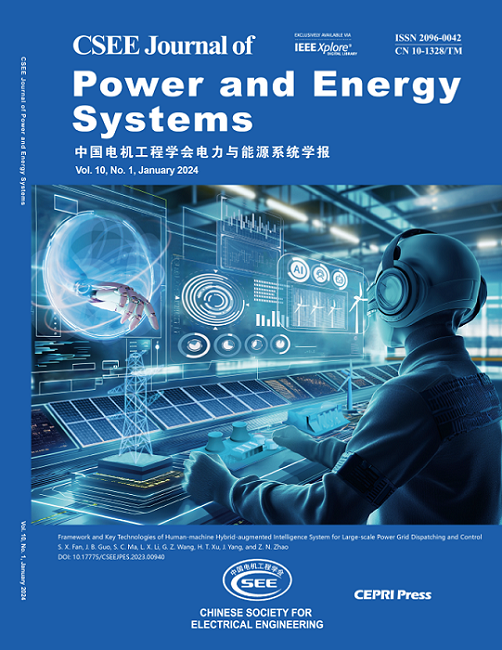分布式无线网络中时延差异的需求响应管理
IF 5.9
2区 工程技术
Q2 ENERGY & FUELS
引用次数: 0
摘要
智能电网在需求响应(DR)控制下的性能取决于其网络的行为,这涉及到多类别DR的差异。本文提出了一种用于智能电网下需求传输的分布式无线网络(DWN),根据时延差异将所有的容灾项目分为应急容灾和一般容灾。在该DWN中,设计了伪双跳传输架构,分别在本地处理紧急DR和集中处理一般DR。在此基础上,采用基于通信性能和计算性能的分析框架,验证了DWN的可靠性和有效性。在此框架的基础上,导出了渐近中断和计算概率的封闭表达式,并将其结果用于研究紧急和一般DRs的性能。数值结果验证了所提网络的可靠性和有效性,揭示了各参数对容灾性能的影响。其中,对于紧急容灾,局部解决方案能够及时处理紧急任务,而集中处理方案能够更新和处理一般容灾。本文章由计算机程序翻译,如有差异,请以英文原文为准。
Demand Response Management with Latency Difference in Distributed Wireless Network
The performance of smart grid under the demand response (DR) control depends on the behavior of its network, which involves differences for multi-category DRs. In this paper, a distributed wireless network (DWN) is proposed for the demand transmission under smart grid, where all DR projects are divided into the emergency DR and the general DR by the latency difference. In the proposed DWN, a pseudo-double-hop transmission architecture is designed to handle the emergency DR locally and general DRs centrally, respectively. Furthermore, an analysis framework based on communication and computing performance is used to certify the reliability and effectiveness of DWN. Based on the framework, the closed-form expressions are derived for the asymptotic outage and computing probability, the results of which are used to investigate the performance of emergency and general DRs. Numerical results validate the reliability and effectiveness of the proposed network and reveal the effect of various parameters on the performance of DR. Notably, the local solution can handle, in terms of the emergency DR, the emergency tasks in time, and the centralized processing solution can update and process the general DR.
求助全文
通过发布文献求助,成功后即可免费获取论文全文。
去求助
来源期刊

CSEE Journal of Power and Energy Systems
Energy-Energy (all)
CiteScore
11.80
自引率
12.70%
发文量
389
审稿时长
26 weeks
期刊介绍:
The CSEE Journal of Power and Energy Systems (JPES) is an international bimonthly journal published by the Chinese Society for Electrical Engineering (CSEE) in collaboration with CEPRI (China Electric Power Research Institute) and IEEE (The Institute of Electrical and Electronics Engineers) Inc. Indexed by SCI, Scopus, INSPEC, CSAD (Chinese Science Abstracts Database), DOAJ, and ProQuest, it serves as a platform for reporting cutting-edge theories, methods, technologies, and applications shaping the development of power systems in energy transition. The journal offers authors an international platform to enhance the reach and impact of their contributions.
 求助内容:
求助内容: 应助结果提醒方式:
应助结果提醒方式:


